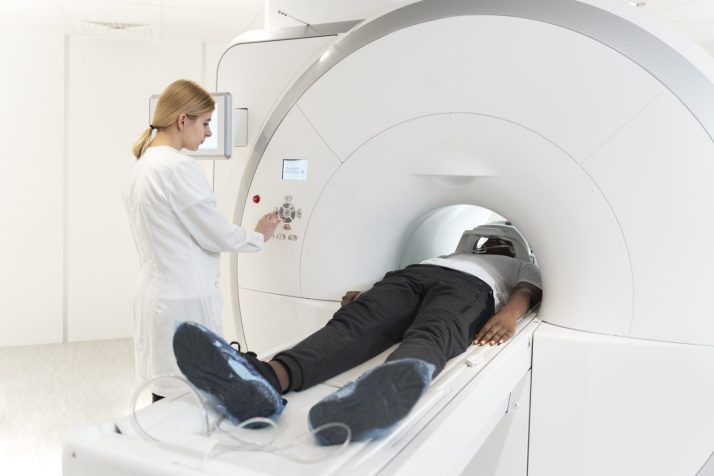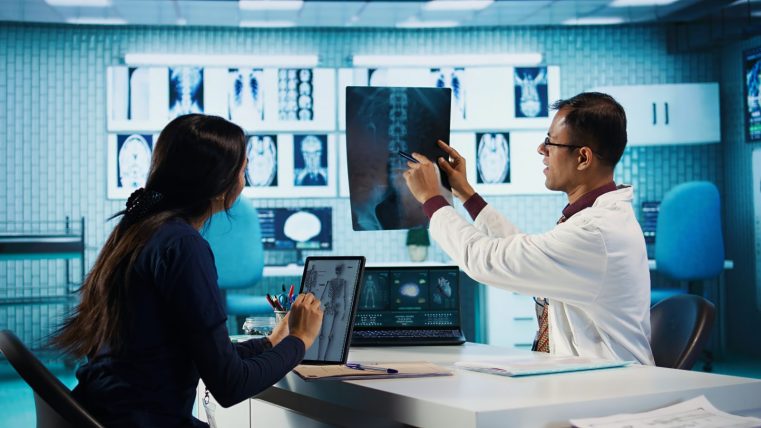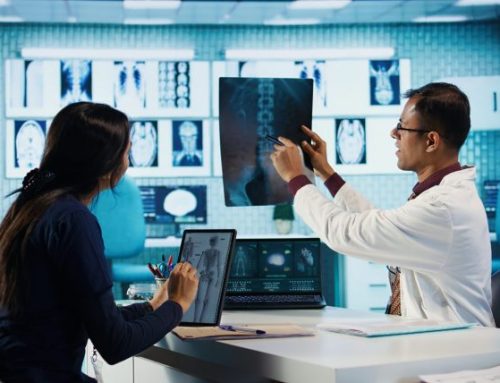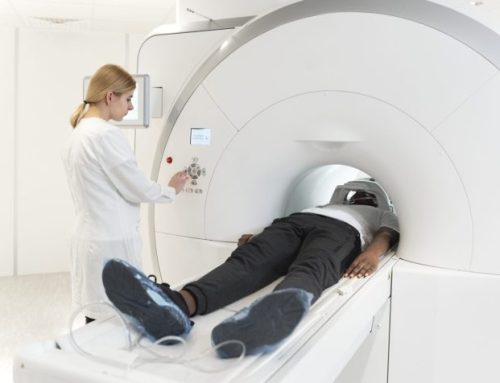What is an Ultrasound?
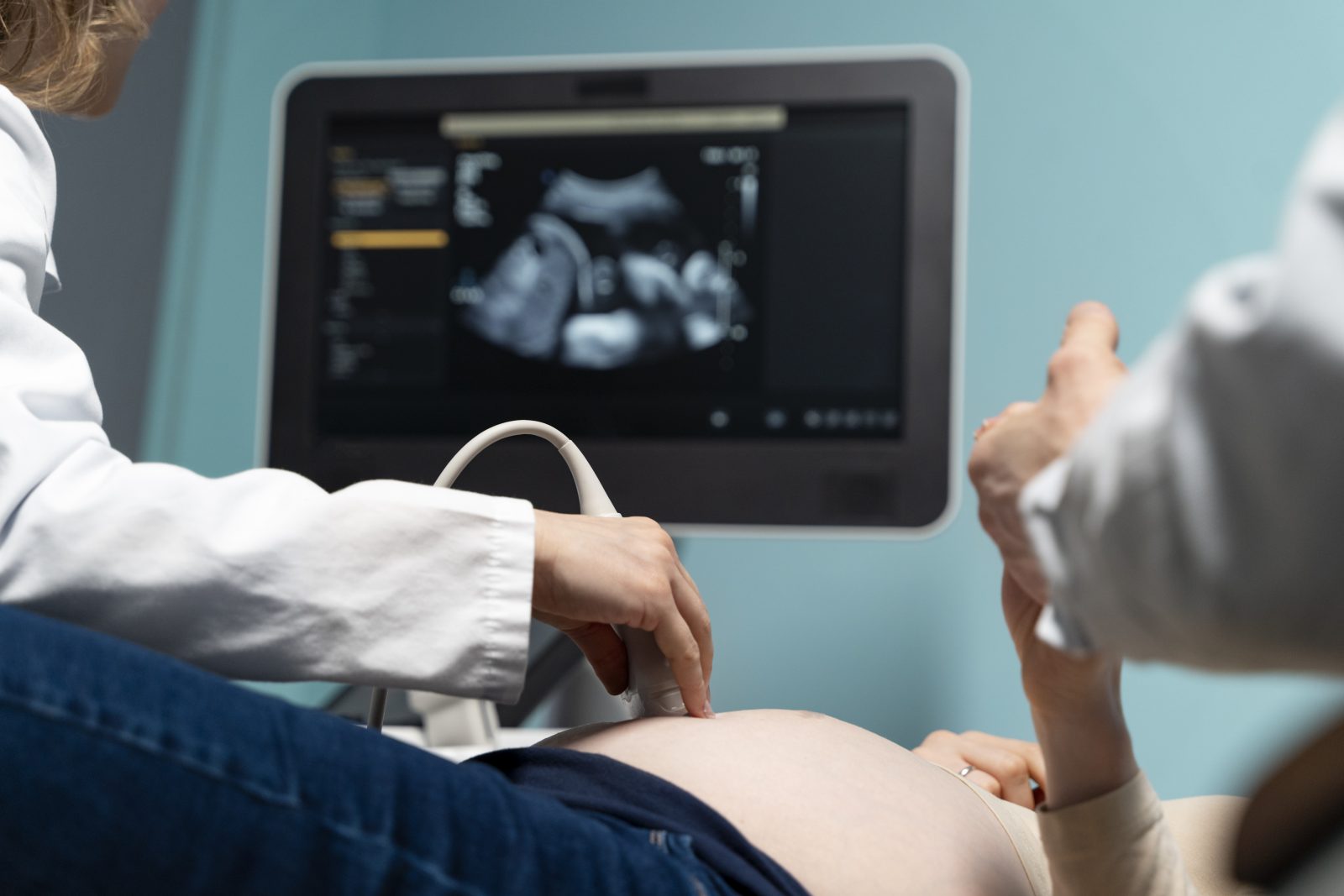
The first successful use of ultrasound technology within medicine occurred all the way back in 1956, when an obstetrician was able to successfully measure the head diameter of a baby within the womb. Constant refinements and advances throughout the 1960s and 1970s and on into the present day have made ultrasounds a powerful tool in real-time imaging.
Although ultrasounds are used heavily in monitoring pregnancy, they play a role in a variety of other medical specialties, including diagnosing and monitoring cardiovascular, gastrointestinal and musculoskeletal concerns.
This article will provide details on what ultrasounds are, how they work, and what to expect as a patient during an ultrasound.
What is an Ultrasound?
An ultrasound is a non-invasive imaging technique that utilizes high-frequency sound waves to create detailed images of organs, tissues, and blood vessels within the human body. Unlike X-rays, which use ionizing radiation, ultrasounds are completely safe for individuals of all ages, including pregnant women and children.
During an ultrasound procedure, a specialized device known as a transducer is placed on the patient’s skin. This transducer emits high-frequency sound waves that penetrate the body’s tissues. As these sound waves encounter different structures, they bounce back and create echoes. The transducer captures these echoes, and a computer processes them to generate images on a screen.
There are various types of ultrasound techniques:
-2D: This creates a two-dimensional picture of the internal body, like a black and white picture.
-3D: This technique combines multiple 2D images from varied angles and a computer processes the images into a 3D visual.
-4D: This ultrasound is able to compile a variety of 3D images, and adds the dimension of time, creating essentially of an organ or tissue in motion.
-Doppler: This type is able to measure blood flow. It can determine blood flow speed & direction, and can detect clots, heart valve issues, blockages or vessel narrowing.
There are also purpose-built ultrasound devices for minimally invasive procedures such as transvaginal and transrectal procedures. In these instances, the transducer is a thin wand-like probe that allows usage in confined spaces.
The Patient Experience: What Happens During an Ultrasound?
Depending upon the body part that will be undergoing an ultrasound will determine if you have any sort of preparation required:
-Abdomen: You may be asked to fast for a period of 8-12 hours prior to the ultrasound. If organs such as the liver, pancreas, gallbladder, or spleen are being scanned, an empty stomach and intestine can help visualization. In some instances, you may be asked to drink water/clear liquids.
-Pelvis: You’ll be instructed to drink 32 ounces of water about an hour before the scan, and not urinate. A full bladder helps push the intestines out of the way, allowing a better view of pelvic organs.
-Pregnancy: During early pregnancy, a full bladder may be required for a better scan.
-Kidney: You may be asked to drink water before the exam.
Other parts of the body require no special preparation. Once you arrive at the hospital, you'll likely change into a hospital gown and remove any jewelry or other metal items from the body part that is being scanned.
The Scan: You will be taken into an exam room with the ultrasound machine. The room is usually dimly lit so that the technician can better see the imagery on the screen. You will lie on an exam table and the technician will position you best to scan the area in question.
A warm, water-based gel will be applied to your skin. The gel helps the ultrasound transducer make better contact with your skin and transmit sound waves. The sound waves are of a high frequency and are inaudible to humans. The patient does not hear nor feel the soundwaves.
The technician slides the transducer over your skin, capturing images of the organs and tissue underneath. In some cases, the technician will change your position or ask you to hold your breath during the process.
The ultrasound normally takes 30-60 minutes. When finished, the technician will wipe off the gel and you can get dressed.
There is no recovery period for most ultrasounds. The patient can resume their normal activities immediately.
Common Uses of Ultrasounds
Ultrasounds are some of the most widely used imaging applications around. They are used in:
-Pregnancy: Ultrasounds are used to confirm pregnancy and determine the age of the fetus. Scans are also used to measure the development of the fetus (its growth, position, amount of amniotic fluid) as well as detect any potential birth defects.
-Medical Diagnosis: Ultrasounds can determine these specific ailments:
- Gallstones
- Liver Disease
- Ovarian Cysts
- Kidney Stones
- Blood Clots
- Heart Valve Defects
- Tendonitis
- Arthritis
- Testicular Defects/Injury
- Breast Cancer
- Thyroid Gland Cysts
-Guiding Medical Procedures: Through the real-time imaging of ultrasounds, needles can be guided for biopsies, injections, catheters and other invasive procedures. The technology ensures accuracy during a procedure and reduces the risk of complications.
-Therapy: Ultrasounds can also be used therapeutically in the following ways:
-Deep Heat Therapy: An ultrasound can generate heat deep in tissue, generating increased blood flow and relaxing muscles. This reduces pain and encourages healing.
-Tissue Repair: Ultrasounds can cause the body to produce collagen, a protein that is essential for tissue healing. This helps speed the healing of bone fractures as well as chronic wounds such as diabetic ulcers.
-Drug Delivery: The sound waves of the ultrasound can push medicine through the skin and into underlying tissue. This treats localized pain and inflammation. It can also treat skin diseases such as psoriasis and eczema.
-Breaking Up Scar Tissue: Ultrasounds can create tiny gas bubbles within scar tissue. This process is known as cavitation. When those bubbles collapse, they create tiny shockwaves that break down the scar tissue. This is particularly useful in those instances where scar tissue causes pain and hinders motion.
-Deposits Breakdown: Through cavitation, ultrasounds can break apart kidney stones and gallstones.
-Cancer Treatment: HIFU( high-intensity focused ultrasound) can heat cancerous tumors to a high temperature, destroying them.
-Cataract Surgery: An ultrasonic probe can break up a cataract during eye surgery, making the process less invasive and leading to faster recovery.
RadiologyAssist: Your Partner in Ultrasounds
We are the national leader in providing radiologic screenings to uninsured and self-pay patients. We partner with over 1000+ high-quality accredited centers nationwide, ensuring quality and convenient care with up-front transparent pricing. Our scheduling capabilities allow our patients to get their affordable ultrasounds quickly, avoiding delays in diagnosis and care.
Final Thoughts
For more than 60 years, ultrasounds have been a leading diagnostic and therapeutic tool, safely and effectively identifying countless medical conditions and providing care. At RadiologyAssist, we make these essential scans affordable and within reach for everyone.
Blog & Healthcare News


